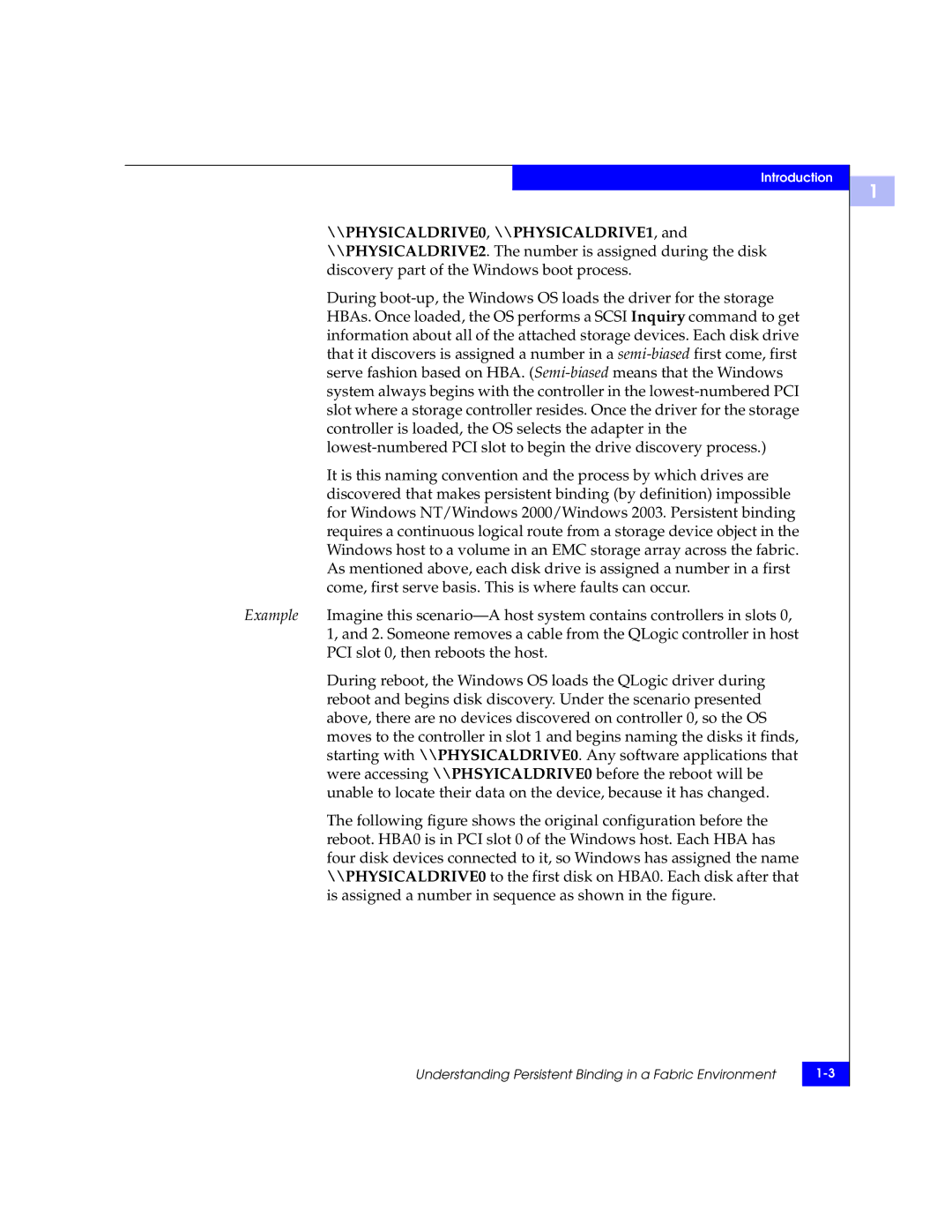
Introduction
\\PHYSICALDRIVE0, \\PHYSICALDRIVE1, and \\PHYSICALDRIVE2. The number is assigned during the disk discovery part of the Windows boot process.
During
It is this naming convention and the process by which drives are discovered that makes persistent binding (by definition) impossible for Windows NT/Windows 2000/Windows 2003. Persistent binding requires a continuous logical route from a storage device object in the Windows host to a volume in an EMC storage array across the fabric. As mentioned above, each disk drive is assigned a number in a first come, first serve basis. This is where faults can occur.
Example Imagine this
During reboot, the Windows OS loads the QLogic driver during reboot and begins disk discovery. Under the scenario presented above, there are no devices discovered on controller 0, so the OS moves to the controller in slot 1 and begins naming the disks it finds, starting with \\PHYSICALDRIVE0. Any software applications that were accessing \\PHSYICALDRIVE0 before the reboot will be unable to locate their data on the device, because it has changed.
The following figure shows the original configuration before the reboot. HBA0 is in PCI slot 0 of the Windows host. Each HBA has four disk devices connected to it, so Windows has assigned the name \\PHYSICALDRIVE0 to the first disk on HBA0. Each disk after that is assigned a number in sequence as shown in the figure.
Understanding Persistent Binding in a Fabric Environment | |
|
|
1
